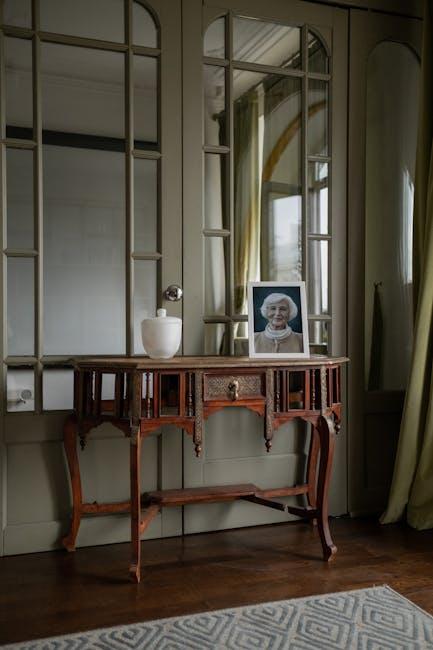In the realm of contemporary horror cinema, few films have sparked as much debate and fascination as Ari Aster‘s “Hereditary.” Upon its release, the movie was hailed as a masterclass in psychological terror, with its intricate storytelling and haunting visuals leaving an indelible mark on audiences and critics alike. Yet, amidst the accolades, a polarizing question emerges: Is “Hereditary” a beautifully crafted narrative that masterfully explores the depths of familial trauma, or does it succumb to being a visual overload that overwhelms rather than enlightens? This article delves into the multifaceted layers of “Hereditary,” analyzing its narrative structure, thematic depth, and visual artistry to discern whether it stands as a paragon of modern horror or falters under the weight of its own ambition. With an optimistic lens, we will explore the film’s ability to balance its complex storytelling with its striking visual elements, ultimately seeking to understand the delicate interplay between art and excess in this cinematic tour de force.
Cinematic Mastery: The Art of Storytelling in Hereditary
The intricate tapestry woven in Hereditary is nothing short of a masterclass in cinematic storytelling. Ari Aster, the visionary director, employs a meticulous blend of visual cues and narrative depth to create a hauntingly immersive experience. The film’s narrative structure is a symphony of suspense, each scene carefully orchestrated to build an atmosphere of dread and intrigue.
- Symbolism: Every frame is laden with symbols that enrich the story, from the ominous miniatures created by Annie to the cryptic family secrets that unravel.
- Character Development: The characters are not just players in a horror plot; they are deeply flawed, relatable individuals whose personal tragedies add layers of complexity.
- Visual Storytelling: The use of lighting, camera angles, and color palettes enhances the emotional gravity, making the audience feel every ounce of terror and sorrow.
In essence, Hereditary is a testament to how horror can transcend mere jump scares to become a profound narrative experience. It’s a visual and emotional journey that leaves a lasting impact, showcasing the power of storytelling in cinema.

Emotional Depth: Exploring the Films Complex Characters
The characters in Hereditary are meticulously crafted, each one brimming with emotional intricacies that elevate the narrative beyond mere horror. Annie, portrayed by the formidable Toni Collette, is a mother grappling with the loss of her own mother while trying to shield her family from an insidious fate. Her character oscillates between vulnerability and fierce determination, creating a palpable tension that drives the film’s emotional core.
Peter, Annie’s teenage son, is another focal point of the film’s emotional depth. His journey from typical adolescent struggles to the psychological torment inflicted by supernatural forces is both harrowing and compelling. Key moments that highlight these complexities include:
- Peter’s guilt-ridden silence after a tragic accident
- Annie’s desperate attempts to communicate with the dead
- The strained yet poignant interactions between family members
These elements not only add layers to the characters but also make the audience deeply invested in their fates.

Visual Brilliance: A Closer Look at Hereditarys Aesthetic Choices
Ari Aster’s Hereditary is a masterclass in visual storytelling, employing a meticulous blend of cinematography, set design, and lighting to craft an unsettling yet mesmerizing atmosphere. The film’s aesthetic choices are deliberate, creating an immersive experience that lingers long after the credits roll. The use of symmetry and framing in the shots not only heightens the sense of dread but also adds a layer of beauty to the horror unfolding on screen.
Consider the following elements:
- Lighting: Shadows and dim lighting play a crucial role, enhancing the feeling of claustrophobia and impending doom.
- Set Design: The intricately detailed dollhouse motif mirrors the characters’ lives, symbolizing control and manipulation.
- Color Palette: The muted, earthy tones contribute to the film’s somber mood, making the occasional bursts of color all the more striking.
These choices are not merely for aesthetic pleasure but serve to deepen the narrative, making Hereditary a visually stunning piece of cinema that transcends the horror genre.

Balancing Act: Recommendations for Enjoying Hereditarys Visual and Narrative Elements
Striking a balance between Hereditary’s stunning visuals and its intricate narrative can enhance your viewing experience. Here are some tips to help you fully appreciate both elements:
- Focus on Symbolism: Pay close attention to recurring symbols and motifs. These often carry deeper meanings and connect various plot points, enriching your understanding of the story.
- Embrace the Atmosphere: Allow yourself to be immersed in the film’s atmosphere. The cinematography and sound design are crafted to evoke specific emotions and build tension, complementing the narrative.
- Rewatch for Details: Consider watching the film more than once. The first viewing can be overwhelming due to the intensity of both the story and visuals. A second viewing can reveal subtle details you might have missed initially.
By mindfully engaging with both the visual and narrative aspects, you can fully appreciate the meticulous craftsmanship that makes Hereditary a standout piece of cinema.































